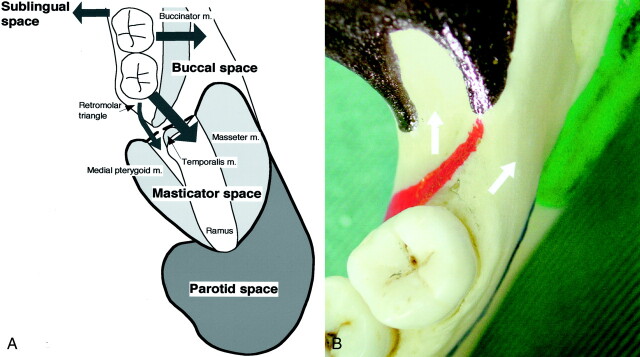Fig 4.
Extension pathways of lower gingival cancer.
A, Diagram shows the pathways for the spread of lower gingival cancers in molar region into the buccal, masticator, and sublingual spaces. The retromolar triangle or buccal space immediately anterior to mandibular ramus serves as a corridor for cancers to spread into the masticator space. Note that a fat space exists between the medial pterygoid muscle and mandibular ramus; this is a site at which cancer can spread from the retromolar triangle without substantial bone destruction. In contrast, cancers that spread into the buccal space, after tunnelling through the alveolar ridge and then bypassing the buccinator muscle attachment, may destroy the anterior portion of mandibular ramus and invade the masticator space.
B, Photograph shows the topological relationship of lower gingival cancers that spread into masticator space and the muscle attachments to mandible. Colored areas indicate muscle attachments to the mandible: red indicates the buccinator; black, temporalis; green, medial pterygoid; and blue, mylohyoid. Arrows indicate two pathways for lower gingival cancer spread into the masticator space.

